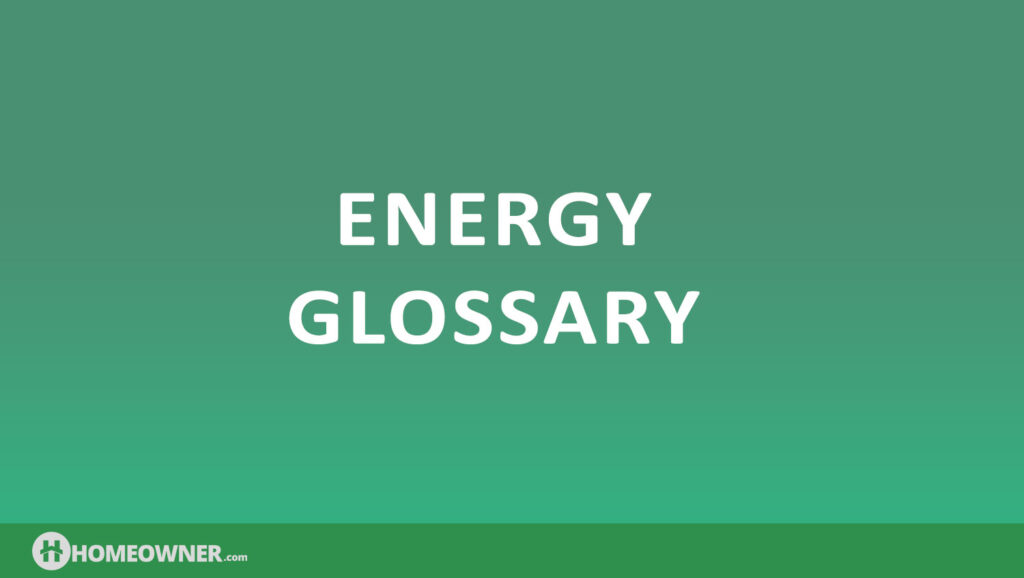Societies have taken advantage of wind power for thousands of years. The first known use was in 5000 BC when people used sails to navigate the Nile River. Persians had already been using windmills for 400 years by 900 AD in order to pump water and grind grain. Windmills may have even been developed in China before 1 AD, but the earliest written documentation comes from 1219. Cretans were using “literally hundreds of sail-rotor windmills [to] pump water for crops and livestock.”
The Windmill
The Dutch were responsible for many refinements of the windmill, primarily for pumping excess water off land that was flooded. As early as 1390, they had connected the mill to “a multi-story tower, with separate floors devoted to grinding grain, removing chaff, storing grain, and (on the bottom) living quarters for the windsmith and his family.” Its popularity spread to the point that there were 10,000 windmills in England. But perfecting the windmill’s efficiency to the point that it “had all the major features recognized by modern designers as being crucial to the performance of modern wind turbine blades” took almost 500 years. By then, applications ranged from saw-milling timber to processing spices, tobacco, cocoa, paints, and dyes.
The windmill was further refined in the late 19th century in the US; some designs from that period are still in use today. Heavy, inefficient wooden blades were replaced by lighter, faster steel blades around 1870. Over the next century, more than six million small windmills were erected in the US in order to aid in watering livestock and supplying homes with water during the development of the West. The first large windmill to produce electricity was the “American multi-blade design,” built in 1888. Its 12-kilowatt capabilities were later superseded by modern 70-100 kilowatt wind turbines.
Wind Energy Sources
Today, people are realizing that wind power “is one of the most promising new energy sources” that can serve as an alternative to fossil fuel-generated electricity.
With today’s technology, wind energy could provide 20% of America’s electricity (or about the amount nuclear power provides) with turbines installed on less than 1% of its land area. And within that area, less than 5% of the land would be occupied by wind equipment-the remaining 95% could continue to be used for farming or ranching. By the year 2020, 10 million average American homes may be supplied by wind power, preventing 100 million metric tons of CO2 emissions every year. Lessening our dependence on fossil fuels is critical to the health of all living things, and wind energy can do just that.
The 3 billion kWh of electricity produced by America’s wind machines annually displace the energy equivalent of 6.4 million barrels of oil and avoid 1.67 million tons of carbon emissions, as well as sulfur and nitrogen oxide emissions that cause smog and acid rain. In other words, “more wind power means less smog, acid rain, and greenhouse gas emissions.”
Windmills may have been around for almost 1500 years, but it was not imagined that wind power would become affordable enough to compete with fossil fuels. Indeed it has. In fact, many utility services around the world offer wind-generated electricity at a premium of 2 to 3 cents per kWh. If a household used wind power for 25% of its needs, it would spend only $4 or $5 per month for it and the price is still dropping.
Compare this to 4.8 to 5.5 cents per kWh for coal or 11.1 to 14.5 cents per kWh for nuclear power. Wind energy is “cheaper than any other new electric generation except natural gas.[which] emits one pound of greenhouse gases for every kilowatt-hour of electricity it generates.” The success of this energy is in part due to the fact that its costs have gone “down by more than 80% since the early 1980s.” Even lower prices are expected, as “industry analysts see the cost dropping by an additional 20 percent to 40 percent by 2005.”
Electricity from Wind
Germany, the US, Spain, Denmark, India, and Australia are among the world’s leading nations in the acquisition of wind energy. Wind-generated energy is growing in leaps and bounds.
Wind power is now the world’s fastest growing energy source and has also become one of the most rapidly expanding industries, with sales of roughly $3 billion in 2008. Major offshore developments are likely in northern European waters in the early part of the next century.
This will be the next major step for this technology and will result in a dramatic increase in decentralized electricity generation. Offshore wind has the potential to deliver substantial quantities of energy at a price that is cheaper than most of the other renewable energies, as wind speeds are generally higher offshore than on land
As of 1999, global wind energy capacity topped 10,000 megawatts, which is approximately 16 billion kilowatt-hours of electricity. That’s enough to serve over five cities the size of Miami, according to the American Wind Energy Association. Five Miamis may not seem significant, but if we make the predicted strides in the near future, wind power could be one of our main sources of electricity.
“With today’s technology, wind energy could provide 20% of America’s electricity (or about the amount nuclear power provides) with turbines installed on less than 1% of its land area. And within that area, less than 5% of the land would be occupied by wind equipment, and the remaining 95% could continue to be used for farming or ranching.” By the year 2010, 10 million average American homes may be supplied by wind power, preventing 100 million metric tons of CO 2 emissions every year.
Lessening our dependence on fossil fuels is critical to the health of all living things, and wind energy can do just that. “The 3 billion kWh of electricity produced by America’s wind machines annually displace the energy equivalent of 6.4 million barrels of oil and avoid 1.67 million tons of carbon emissions, as well as sulfur and nitrogen oxide emissions that cause smog and acid rain.” In other words, “more wind power means less smog, acid rain, and greenhouse gas emissions.”
Major offshore developments are likely in northern European waters in the early part of the next century. This will be the next major step for this technology and will result in a dramatic increase in decentralized electricity generation. Offshore wind has the potential to deliver substantial quantities of energy at a price that is cheaper than most other renewable energies, as wind speeds are generally higher offshore than on land.
According to an April 1999 press release, “Worldwide, wind energy capacity has expanded at an annual rate of 25.7% during the 1990s, with the total doubling every three years and the cost of production declining steadily as each doubling occurs and economies of greater volume are realized.” Christophe Bourillon, executive director of the European Wind Energy Association, remarked that Europe has emerged “as a world leader in wind energy development” in the 1990s, which he expects this to continue.
As far as the wind industry in the US is concerned, June of 1999 signaled the end of the best year yet. The executive director of the American Wind Energy Association attributes this “wind rush” to “progressive state policies and growing consumer demand for ‘green’ (low-environmental-impact) power.”
Many states now require that part of their energy production come from renewable sources. And utilities are now offering people “the choice of buying green power at a premium over power from conventional, environmentally-damaging sources such as fossil fuels. In most cases, wind, as one of the lowest-cost renewable energy sources, is the primary beneficiary.” Utilities, as well as policymakers, are continuously surprised by the public’s positive response to the availability of this green power.
Bird fatalities on wind farms are a concern. A study in the Altamont Pass Wind Resource Area in California found 182 dead birds, 119 of which were raptors. In response to this, the wind industry is committed to modifying the equipment in order to make the area safer for birds. Ideas include reducing the number of perches on turbines, spacing turbines far apart and in the direction of migration, painting patterns on blades that contrast with landscape colors, and even broadcasting a radio frequency to keep birds away altogether.
Amidst its efforts to take responsibility for this issue, the industry quietly points out how many millions of species are killed annually during the acquisition and distribution of most conventional sources of energy.
Overall, the advantages of wind power heavily outweigh the disadvantages. Although it can only supplement other sources of energy (for now), it provides skilled jobs for people in rural communities, replaces environmentally harmful energy sources, and is inexhaustible.” It will never be subject to embargoes or ‘price shocks’ caused by international conflicts,” and “unlike oil fields, wind energy is renewable, year after year, forever.”
Wind power has been used for thousands of years as an important energy source. It has been harnessed for over one thousand years to pump water, grind grain, and provide motive power for other activities. Wind is the product of the movement of air. Air has a certain density and surrounds the earth for a layer of approximately 64km in altitude. Air exerts a downward pressure, which is referred to as atmospheric pressure. The pressure on the earth’s surface is one atmosphere, or one “bar”, at sea level (mean absolute sea level/masl). Air pressure is measured with a barometer.
As the Earth rotates on its axis, gravity forces this relatively “heavy” air near the Earth’s surface to spin round with it. However, the air higher up is less affected. The difference between the speed at which air moves close to the surface and the speed of air higher up forms vortexes or whirlpools. This mixing causes variations in air speed, and, consequently, “wind” is generated at the earth’s surface.
Additionally, the sun warms the earth and the atmosphere. Heating is greater at the equator than at the earth’s poles. Warm air is less dense (weighs less) than cold air. Warm air rises while cold air sinks. Therefore, there is always a series of pressure differentials in the air caused, 1) by the earth’s rotation; and 2) by differential temperature on the earth’s surface. These two factors account for the earth’s “wind”.
Wind and Energy
Air moves (i.e., wind), and this accounts for its “kinetic energy”. The energy contained within wind can be harnessed to generate force for transport (sails), mechanical energy (windmills), and electrical energy (wind turbines). Fans or blades are fixed to a shaft on a windmill or wind turbine. They are set at an angle such that the air striking them forces them to turn. This turns the shaft, which can then either push a piston (to pump water), turn a series of shafts (e.g., to grind grain), or turn a turbine to generate electricity.
Windmills and turbines must be designed to take advantage of the slowest wind speeds (to generate energy during periods of relative calm), while at the same time be controlled in order not to turn too quickly during periods of high wind speeds. This range of powering for a generator gives it its “rated power”.
History of Wind Use
Wind has been harnessed for energy for thousands of years. The first sailing ships used wind at least five thousand years ago. Records show Babylonians using wind for powering grinding mills nearly five thousand years ago. Windmills were introduced into
Europe from the Middle East during the early Middle Ages. This technology quickly spread all over the continent to the extent that by 1750 over 5,000 windmills were recorded in use in England. Windmills were used extensively by the Dutch from the 16th Century into the 20th Century to pump water to prevent flooding (as the Dutch reclaimed so much land from the sea).
Ancient windmills were big, inefficient, and clumsy affairs (but suited to the needs of the times). The first “modern” windmills were developed in the 19th century for livestock and agricultural use in Australia and the United States, then quickly spread to other places, particularly Africa, in the 20th Century. These “new” windmills were made primarily of metal, mounted on relatively light towers, and easily assembled and disassembled. It is recorded that there were over 5 million of these in use in the United States by the 1930s.
There were another 500,000 in Australia, and perhaps a quarter of that number in South Africa and East Africa, with over a million in use in Latin America. Their primary uses were for water pumping for livestock, small-scale irrigation, and domestic uses.
Small “dynamos” or electric generators were often connected to these mills to generate direct current (DC) to charge car batteries for household lighting and radios. This was in widespread use in the United States, Latin America, South Africa, and Australia until after the Second World War.
Modern Wind Energy
Wind energy has undergone a revolution over the past century. The Danes developed the world’s first large wind electrical turbines during the 1930s. These were in widespread use during the Second World War when imported petroleum was scarce, and Denmark needed all the electricity it could get.
As with virtually all renewable energy sources (except large-scale hydropower), wind fell into general disuse with the large-scale production and distribution of inexpensive petroleum following the Second World War. This had a major effect on water pumping patterns all over the world, to such an extent that by 1970, fewer than 50,000 windmills were in use in the United States, and windmills for pumping fell into almost total disuse in Africa and Latin America.
However, the petroleum price “shocks” of the 1970s and the world’s growing concern for the environment had the effect of stimulating new research, development, testing, and production of windmills and wind turbines. Even as petroleum prices slid back to historical levels during the 1980s, the Danes persisted with their work in the field of wind turbine design and production.
Conscious effort on the part of government, industry, academic and research institutions, and local Danish communities not only kept the wind industry alive during the 1980s but helped to install more wind electricity generating capacity than anywhere outside the United States. Today, 75% of all wind turbines exported in the world are Danish-made.
Wind turbines are characterized by their range and diversity. The smallest wind turbines can generate several hundred watts (mainly for recreational uses, but increasingly of interest for charging batteries in the developing world). At the other end of the spectrum, pilot tests in New Zealand have produced 3 MW turbines, and the Danes are in the process of pilot testing turbines of 2 MW for off-shore wind electricity generation.
Germany has installed over 2 GW of wind electricity since 1994, making it the world’s largest wind electricity generator (installation proceeds at over 100 MW per month at present). The UK, The Netherlands, and Denmark are pioneering large off-shore wind “farms” with designs for hundreds of megawatts of capacity for the next five years.
Meanwhile, the USA is ready to re-embark upon another major wind energy program, the Indians have installed more wind electricity than any country in the developing world, and wind electricity is of growing interest all over the world.
Table 1 – Projected Global Wind Installation Rate
| Installation Rate (MW per year) | ||||
| 1995 | 2000 | 2005 | ||
| EU | 610 | 1,620 | 1,030 | |
| Other Europe | 18 | 170 | 200 | |
| North America | 175 | 750 | 500 | |
| South America | 23 | 250 | 500 | |
| China | 50 | 275 | 500 | |
| India | 300 | 400 | 500 | |
| Other | 35 | 250 | 450 | |
| Total | 1,210 | 3,715 | 3,680 | |
Source: ESD
Meanwhile, wind pumping continues to develop, although at a slower pace, and with much less international interest. Wind pumps suffer from two important disadvantages relative to wind turbines, which can be, and are, used for water pumping.
Wind pumps must be sited over or very near their water sources. This reduces the areas where they can be used, as not every area on or near water has good wind “regimes” (wind speeds, frequency of good winds, etc.).
Second, wind pumps have only one application, water pumping. A wind turbine, on the other hand, can be sited in an area with good wind, and an electric cable can then be laid to the borehole, well, stream or river to pump the water to the desired location. When the electricity is not being used for pumping, it can be used for other purposes such as lighting homes, providing storage electricity for refrigerators, computers, etc.
Given the wide range of wind turbines available today, and the extensive research and development of wider “niche” applications, it seems that wind generated electricity may replace windmills for pumping water in all but a few locations.
Better Than Free Electricity In Texas
A very strange thing happened in Texas. What is called the “spot price of electricity” fell toward zero, then hit zero, and after that, went into the negative for several hours. While the people of Texas slept, power producers were paying their customers, instead of vice versa. During that night, the price dropped to a negative $8.52 a megawatt hour. The wind blowing across Texas was turning 100s of wind turbines, and generating huge amounts of electricity at a time when very little was actually needed.
Most economists would say this was impossible, but they’re not doing business in Texas. According to market tradition, especially in economies devoted to the free market, sellers do not provide a service or product at a negative cost. There is normally no profit with behavior of this sort. But circumstances in Texas led to exactly that, and curiously, this could only happen in Texas (at least in terms of using wind). Texas has created its own unique approach to handling electricity.
There are three factors that are unique to Texas.
Texas is, first and foremost, an electrical island. This state is known for behaving as though it is a sovereign nation, and for nearly 10 years it actually was an independent republic. It is the only one of the 48 continental states running an electrical grid not connected to those serving other states. The grid is run by Ercot (Electric Reliability Council of Texas).
The majority of states are normally part of a larger regional body, such as MISO, which oversees the grid in a large part of the country’s center, or PJM, which covers 13 states in the Middle Atlantic and mid-America. As an electrical island, Texas has developed much greater control over its electrical market. As a consequence, Texas does not suffer blackouts if there are problems in New Mexico or California. On the downside, this also means electricity generated in Texas must be consumed at the time it’s produced. It can’t be sold to another grid, where other consumers might use it.
The state of Texas has far more wind power available than any other state in the nation. Texas has more wind turbines (15,635 megawatts worth) than any other state in the Union. Texas has nearly 10,000 turbines and gets 9% of its electrical power from wind. In 2014, wind power supplied 4.4% of electricity produced in the United States, as a whole.
Demand for electricity varies a great deal throughout the day in Texas, as is true of most places. It increases as people wake up. They turn on the lights, fix breakfast, and go to work. Traditionally, usage peaks in the late afternoon. At night, usage drops abruptly. Wind speed and direction can change quite a bit, causing variables. So, at 2 AM, if the wind is very strong, wind power can become a major force. On March 29th, for example, at 2:12 AM, the wind generated about 40% of Texas’ electricity. The great part about this is the wind is free. Unlike coal or natural gas, there is no cost for fuel. Once a turbine starts running, the wind is free.
Thirdly, Texas has a unique market structure. ERCOT has set up a complicated grid system. It is set up in a way that acquires a large amount of electricity through a continuous series of auctions. Power generators in Texas electronically bid every five minutes in ERCOT’s real-time market. They offer to provide blocks of energy at specific prices. The electrical council selects the lowest bids and the most sensible from a grid-management ideal. At 15 minute intervals, the bids settle down and the price for electricity is accepted in the round.
Free or negative wholesale prices for power can, and do, occur in other places within the U.S. electrical systems, primarily when there is a large mismatch between demand and supply. The Energy Information Administration has identified 84 separate instances of negative prices occurring in the Northwest U.S. In 2011. This was the result of an abundant hydro-power supply during periods of low demand.
In Texas, after midnight on a Sunday, the combination of these factors caused the price of electricity to drop. Demand fell significantly at 4 AM. The electricity needed by Texas at this time was about 45% lower than the evening’s peak. The wind blew constantly. At 3 AM, the wind was supplying about 30% of Texas’ electricity. Because Texas is an electrical island, all the electricity generated by the state’s wind turbines could not be sold to grids in other parts of the country.
The situation gave wind farms a great opportunity to not just lower prices, but actually pay consumers (though, in truth, the money came from the federal government).
This is possible because of a tax credit paying $23 per MW hour. Normally, the wind bid is made at the lowest prices. Because there are no fuel costs, it doesn’t cost much money to keep wind turbines turning after they have been built. A federal electrical production tax credit, paying 2.3 cents per kilowatt-hour, applies to each kilowatt of power generated. That means even if wind operators gave the electricity away, or offered the system money to take the electricity, they would still receive tax credits equaling $23 per megawatt-hour.




